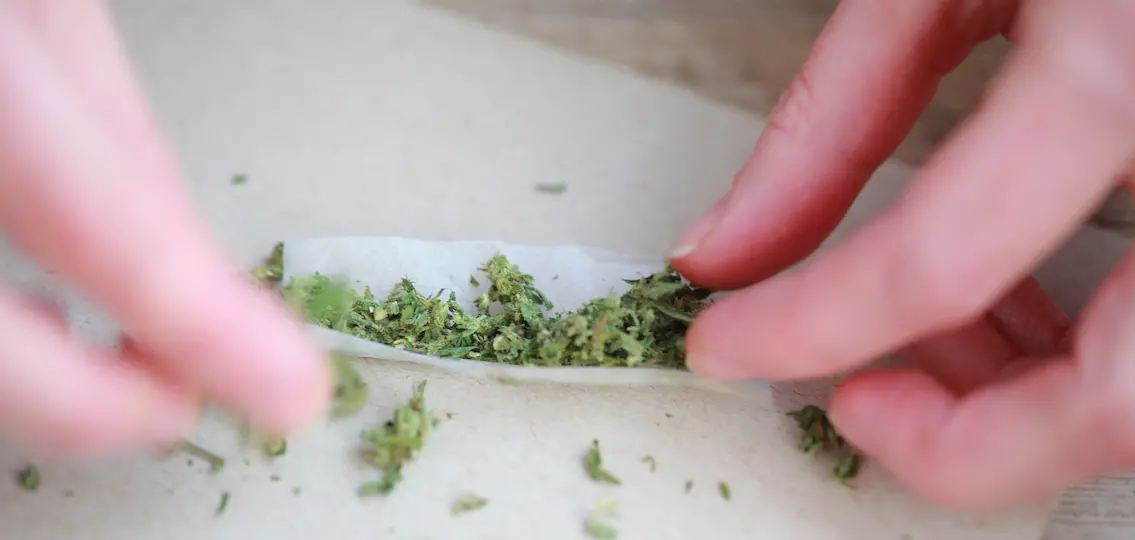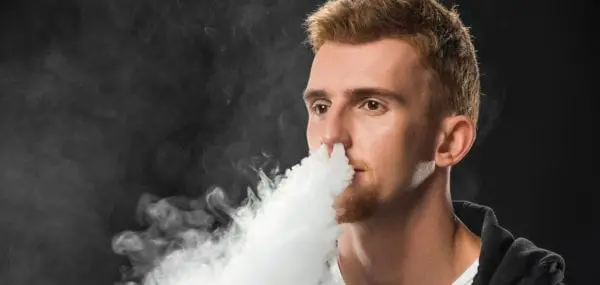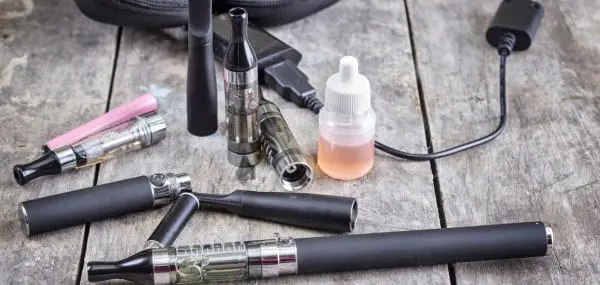In a recent interview, Lady Gaga, the reigning queen of pop culture, described her hit song, “Born This Way,” as “the marijuana to the heroin of the album.” Whatever your opinion of Gaga’s musical hooks, the implication is clear: on the buffet of psychoactive drugs, marijuana is the lightweight appetizer before the main course of more “serious” drugs.
Going To Pot: Marijuana Today—More Potent/Dangerous
In other words, what’s the big deal with marijuana? It’s a safe bet that many parents used it recreationally during their formative years. The vast majority of these folks are raising teens, fostering careers and enjoying meaningful lives with nary a drug problem in sight. So, if their teens opt to toke up once in awhile, is it such a bad thing?
But, the marijuana of today is a stronger, amped hallucinogen that is cultivated more widely than ever. Your Teen spoke with experts about how marijuana has changed since the days of reefer madness—and why parents need to take this drug seriously.
Building a Better Plant
Marijuana has benefited from agricultural and horticultural improvements. Growers can now manipulate the level of THC, the main psychoactive ingredient in the plant, and this marks one of the major differences between the marijuana of then and now. According to the government’s marijuana monitoring project, the average potency of the plant has steadily increased.
In 1977, the average THC potency came in at less than 1%. By 2008, it was up to 9.6%. Rusty Payne, spokesman for the U.S. Drug Enforcement Agency (DEA), says that current THC levels range between 6% and 10%, although hydroponics has produced some plants with even higher THC levels (as much as 37%).
Christina Delos Reyes, Chief Clinical Officer Alcohol, Drug Addiction & Mental Health Services (ADAMHS) Board of Cuyahoga County in Cleveland Ohio believes that marijuana of today is more potent because of both higher THC and other contaminates. “Today, the drug is regularly adulterated with cocaine, PCP, formaldehyde and ecstasy. As a result, we see many more cases of addiction.”
As in the “olden days,” smoking the dried marijuana plant remains the most common way to get high. When smoked, the THC travels from the lungs into the bloodstream, ultimately making its way into the brain. The THC then connects with receptors in the brain that control pleasure, memory, concentration and sensory perception. In general, marijuana is viewed as an experience enhancer, at least in the short-term.
Taking a THC Trip
With long-term use, the effects of THC include loss of memory, difficulty with problem-solving, loss of coordination and an over- powering lack of motivation. Just as the drug can enhance positive experiences, it can magnify negatives ones, leading to depression, apathy and even suicidal thoughts.
Again, the controversial questions of addiction and danger level crop up. No death from a marijuana overdose has ever been reported, according to the DEA. Of course, driving a car under the influence of the drug, or engaging in any activity that requires a high level of coordination and judgment could prove fatal.
One of the problems with marijuana is that teens who use don’t always reach a “crisis point,” says Leanne Cavanagh, an adolescent therapist at Recovery Resources in Lakewood, Ohio.
“Kids who are addicted to painkillers, or harder drugs, like heroin, can have that moment where they almost overdose. Marijuana users don’t always hit that dramatic kind of a low, so they don’t necessarily notice that it’s having such an impact on their lives,” she says.
Compared with fabricated drugs, like crystal meth or ecstasy, pot wears the mantle of being “natural.” How can something that comes from nature prove so harmful?
“At the end of the day, marijuana is a mind-altering, addictive drug; and addiction is addiction, no matter your drug of choice,” Cavanagh stresses.
The Gateway Drug
Marijuana is commonly referred to as a “gateway drug,” meaning that people who sample pot will be more likely to experiment with harder drugs. Both Cavanagh and Payne agree that marijuana use often leads to more intense drugs.
But, according to a 2010 study, factors such as race, ethnicity and levels of stress also influence experimentation beyond marijuana. Sociologists at the University of New Hampshire found that white young adults showed the greatest odds of other illicit substance use after marijuana, followed by Hispanics and African Americans. They also noted that the “gateway effect” for teens who used pot generally wore off by age 21, once they were employed and focused on establishing themselves.
But, Lyle Craker, a professor in the department of plant, soil and insect sciences at the University of Massachusetts in Amherst, suggests that any substance used to manipulate reality can “negatively affect an individual’s interaction within society and requires special caution.”
Making Good Time Seem Better
Despite the rise in popularity of others drugs —painkillers like Oxycontin or Valium— marijuana remains a go-to choice among teens. According to Cavanagh, fighting boredom is a big reason, “During the summer, kids don’t have a lot of structured activities. Many of them turn to marijuana because the high creates the illusion of making a good time seem even better.”
There’s also that age-old desire to fit in, which led 18-year-old Nicole to smoke pot. The Cleveland-area teen experimented for the first time when she was 14. She had just started a new school.
“I basically tried pot because I wanted to make friends,” she says. Nicole’s mother found out about her new hobby and sent Nicole back to her old school. By then, she had morphed into a daily user. “Marijuana made me feel that my problems disappeared,” Nicole explains. “It made my life seem more exciting and I liked myself better when I was high.”
Hiding It From Family
Nicole made a concerted effort to hide her habit from her family, like taking walks in the dead of winter to smoke. But everything changed when she discovered that her mom used pot recreationally.
“That scenario is more common than people realize,” Cavanagh says. “Some kids just have it in the house. They were brought up with mom and dad smoking pot around them, so it doesn’t seem like such a big deal, and these parents are often condoning the use.”
Nicole’s father found out about her use when Nicole was arrested. At that point, pot had ceased to be a “problem solver” for Nicole. “After awhile, pot made me obsess more about my problems and I’d start to think the worst all the time,” she says. “I even started to become suicidal.”
Nicole was ordered to rehab and as of last fall, she’s been sober for three months. She earned her high school diploma and plans to attend college. “I’m happy to finally be getting my life on track,” she says
What Should Parents Know?
Signs of use. Look for gradual, but still noticeable, changes in personality and physical appearance, including weight loss or gain (the notorious “munchies” usually leads to increased consumption of low-nutrient foods), more secretive behavior, excessive use of scented products to mask telltale odors or listening to music that glorifies pot use.
Message to teens. Don’t glorify your own past or present use. “If you have experience with marijuana and decide to disclose your personal experiences, make sure to use it as a teachable moment and not to glamorize marijuana use,” Cavanagh says.
Stay involved. Know your kid’s friends and their parents. “When I was using, I’d say I was going to a certain friend’s house, but I really wasn’t,” Nicole reveals. “Keep in contact with parents so you at least know where your kids really are.”
In addiction, relapse is not uncommon. If your child is undergoing rehabilitation, there is a chance for relapse. During the early days of her recovery, Nicole says she still used off and on. Cavanagh explains, “With adolescents, it can be harder for them to maintain sobriety. The drugs are around them at school; their friends are doing it.”
Talk with your teens. “Explain that, as a parent, you get that there is peer pressure and that these drugs are out there. Talk openly about it,” Cavanaugh says. Nicole echoes that sentiment. “Be someone that your kids can talk to.”
Medical Marijuana: The Boon and the Bane
Many teens turn to marijuana as a form of self-medication. The advent of medical marijuana is part of the reason why. “These kids are smart. They go online and find something about how medical marijuana can be used to treat anxiety. So, they decide, ‘I have anxiety,’ and that becomes a justification to use marijuana,” Cavanagh says.
Craker points out that marijuana can have medical benefits for limited medical illnesses, such as cancer. By manipulating the plant, growers produce marijuana that can ease chemotherapy-induced nausea and vomiting. Glaucoma, asthma and depression are other disorders that have seen improvements with guided pot use.
While federal law prohibits the use of pot, some states have legalized medical marijuana. Nevertheless, it’s unlikely your teen is deriving a medical benefit from marijuana. Cavanagh suggests focusing on whether your child might be struggling with mental health issues, such as depression or attention deficient hyperactivity disorder.
“It’s a lot more difficult for teens to ask for help, and it can even be difficult for parents to acknowledge that their teen may need help,” she says. “At that point, kids need to understand that they aren’t just self-medicating with marijuana; they have a drug problem.”




